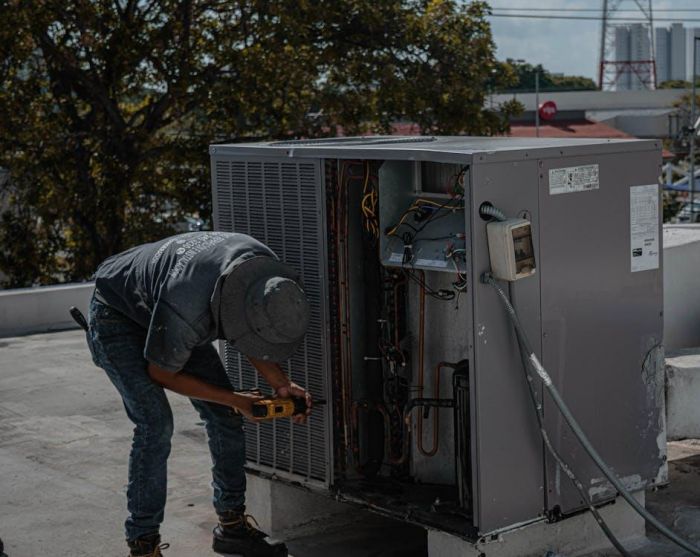The HVAC industry has long relied on traditional methods—paperwork, phone calls, and manual tracking—to manage operations. But times have changed. Technology now shapes how businesses run, and HVAC companies are no exception. From job scheduling to customer management, software platforms offer smarter, faster, and more reliable ways to keep things running smoothly. These tools aren’t just nice to have—they’re quickly becoming essential for staying competitive. Contractors who once juggled folders and whiteboards now streamline their entire workflow on a single screen. This article dives into how software is reshaping the HVAC trade and why it’s happening now.
1. The Paper Problem: What Wasn’t Working
Before technology entered the scene, HVAC businesses faced constant challenges. Paper-based systems made it difficult to stay organized. Lost invoices, forgotten appointments, and unclear job notes created unnecessary stress. Dispatchers shuffled through binders, trying to coordinate teams. Miscommunication between field techs and office staff led to delays. When issues arose, it took hours to locate records or follow up with customers. These inefficiencies didn’t just slow things down—they impacted customer trust and business growth. As the demand for faster service increased, the cracks in the old way of working became harder to ignore. A better solution had to emerge.

2. Early Shifts Toward Technology
The transition didn’t happen overnight. In the early 2000s, many HVAC companies experimented with basic tools—Excel sheets, online calendars, and generic CRMs. These were helpful but not tailored to the industry’s unique needs. HVAC requires precise job tracking, real-time updates, and seamless communication between technicians and staff. That’s when purpose-built solutions began to gain attention. Platforms specifically designed for HVAC brought together scheduling, dispatch, customer history, and invoicing in one place. This shift marked a turning point. Contractors started to realize the value of HVAC contractor software, especially when it helped them save time and reduce costly errors in the field.
3. Real-Time Scheduling and Dispatching
Modern HVAC software allows dispatchers to assign jobs instantly and see where every technician is at any given moment. Instead of calling or texting field staff to coordinate, office teams use a digital dashboard. It shows technician availability, job status, and location in real-time. This makes scheduling more accurate and responsive. If a technician finishes early, the system quickly reassigns another nearby job, reducing downtime. Customers also benefit from shorter wait times and updates via text or email. Real-time dispatching helps businesses increase productivity without hiring more staff. It keeps operations fluid, even on busy days with last-minute service calls.
4. Mobile Apps Empowering Technicians
Technicians no longer carry clipboards or wait until they return to the office to submit reports. With mobile apps linked to HVAC software, they view job details, capture signatures, upload photos, and generate invoices—all from their phones or tablets. This saves time, improves accuracy, and reduces paperwork. Techs can also access equipment history on-site, helping them diagnose issues faster. Updates sync instantly with the office, so everyone stays on the same page. This level of connectivity improves both team performance and customer satisfaction. It also boosts technician confidence because they have the tools and information they need in hand.
5. Centralized Customer Information
Good customer service starts with having the right information at the right time. HVAC software centralizes customer data, including service history, equipment models, maintenance schedules, and past quotes. When a client calls, the office can pull up their entire profile in seconds. This allows staff to answer questions, make informed suggestions, and resolve issues faster. Technicians also benefit, as they can review details before arriving on-site. Instead of guessing or calling the office, they show up prepared. Having everything in one place helps build long-term relationships and ensures nothing slips through the cracks. It creates consistency across every touchpoint.
6. Streamlining Invoicing and Payments
HVAC businesses used to wait days or even weeks to receive payment. Paper invoices got lost, and customers delayed mailing checks. HVAC software changes all that. It lets technicians create and send invoices on the spot. Many platforms offer built-in payment gateways, allowing clients to pay via credit card, ACH, or mobile wallets immediately after service. Automated billing reminders and payment tracking further reduce delays. This improves cash flow, reduces administrative work, and eliminates awkward follow-up calls. Faster payments mean more stability for the business and fewer surprises at the end of the month. Everything becomes smoother and more predictable.
7. Simplifying Maintenance Agreements
Recurring maintenance is a steady source of income, but managing service contracts manually can get messy. HVAC software simplifies it. Businesses can set up automatic reminders for upcoming visits, track contract terms, and manage renewals. Technicians receive alerts about covered services before arriving, so there are no surprises. Customers appreciate the reliability and consistency, especially when they receive reminders about seasonal tune-ups. Software also lets companies bundle and promote service agreements more effectively, boosting sign-ups. This consistent engagement builds trust and ensures long-term client retention. With fewer missed appointments and smoother renewals, maintenance contracts become a powerful business asset.
8. Boosting Team Communication
Miscommunication between office staff and technicians once caused scheduling conflicts, double-bookings, and wasted trips. HVAC software eliminates that friction. Real-time updates keep everyone aligned. If a job changes or a customer cancels, technicians receive immediate notifications through their mobile app. Office staff can send instructions, notes, or photos directly to the technician’s device. Some platforms even offer chat tools or internal messaging to reduce reliance on calls and texts. This streamlined communication improves team efficiency and reduces stress. Everyone knows their role, and nothing gets lost in translation. The result is a more connected, responsive, and organized operation across the board.
The HVAC trade no longer runs on paper, and that’s a good thing. Today’s software platforms allow contractors to do more with less—faster dispatching, cleaner communication, and quicker payments. They improve customer experiences while giving technicians tools that make their jobs easier. HVAC businesses using software see fewer delays, better organization, and higher profits. As the industry continues to evolve, embracing the right technology isn’t optional—it’s a strategic move. HVAC software empowers contractors to meet modern demands without the headaches of old systems. It’s not just about staying current—it’s about staying competitive, agile, and ready for whatever comes next.
Post Comment
Be the first to post comment!


